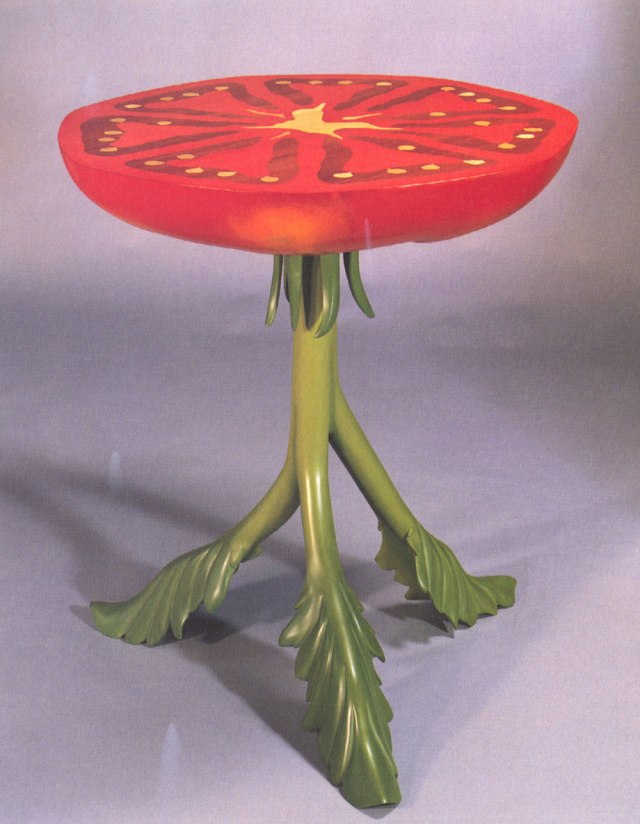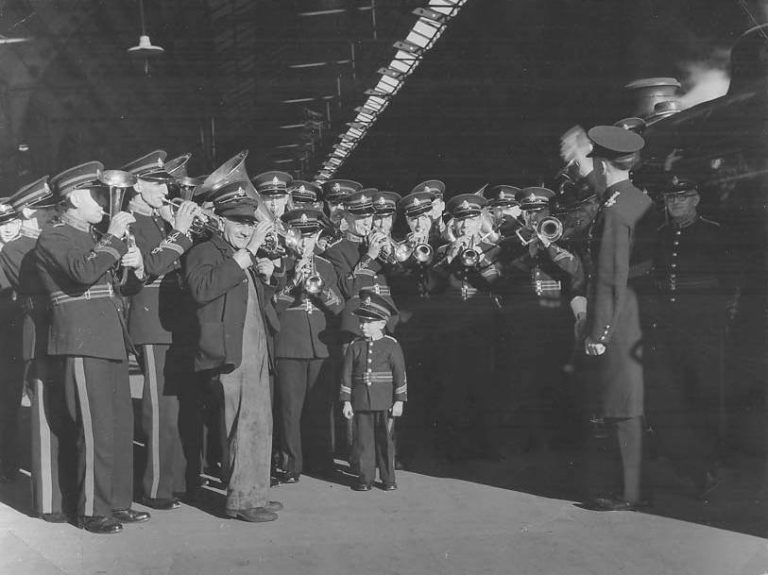Four Kinds of Furniture –

The act of naming something is, in my view, a kind of violence. But it also is a helpful form of shorthand.
With furniture, the most common way to name it is by its ornament (Chippendale, Arts & Crafts, Ikea). This name gives us a rough idea of what it looks like, perhaps when it was built and maybe even some of its construction details (mahogany, through-tenons, confirmat screws).
But what if the piece of furniture doesn’t really have much ornament? What if we are unsure as to when it was built? What if the piece appears in the furniture record made out of every conceivable hardwood and softwood?
What do we call this furniture? One term is “vernacular,” though that word casts a net that’s too wide. Vernacular encompasses 15th-century trestle tables with wedged through-tenons and pine shelves assembled with drywall screws in a mall kiosk.
So I’ve been thinking a lot about furniture on an X/Y axis. The X axis is ornament, from no ornament to all ornament (think Grinling Gibbons). The Y axis is construction quality, from bombproof to being a bomb ready to explode when the humidity changes.
This X/Y axis creates four spaces and four kinds of furniture, and it gives us a sliding scale that we can use to discuss how furniture is made. Let’s talk about these four types.
1. Furniture of the rich who have taste – high-style ornamentation and outstanding joinery. This is almost always the furniture of the well-to-do. This category encompasses furniture from every era, from the Middle Ages up to five minutes ago. It’s period highboys from Thomas Chippendale. Prairie settees from Frank Lloyd Wright. Rockers from Sam Maloof. This is furniture that is built by commission – not manufactured. It is made by the best artisans by the people who can afford it. Its ornamentation might not be ostentatious, but it is still incredibly evident, distinctive and expensive to produce (think James Krenov). The furniture is also – for lack of a better word – specific and not vague. It represents the focused efforts of the builder and the customer to produce something unique.
2. Furniture of the poseurs – high-style ornamentation and crap craftsmanship. This is the world of Ethan Allen, Williams-Sonoma, Baker (and many other commercial manufacturers) who seek to provide furniture that looks like it belongs to the very rich at a price that the upper-middle class can afford. In general, this is the furniture that looks good (even great) from a distance but fails when examined closely. Wood selection is terrible. The finish is more obscuring than revealing of the grain. The interior components of the furniture are generic and have more in common with mass-manufactured furniture. Dovetails are made by machine. Mortise-and-tenon joinery is via cope-and-stick (at best). But most of all, it is manufactured – the parts are interchangeable with other pieces from the same run. And the detailing is, in general, somewhat generic. It is designed to appeal to thousands (maybe tens of thousands) of customers – not just one customer. So these pieces are never polarizing and almost always like melba toast: pleasant but not memorable.
3. Furniture of the desperate – furniture built only on price. With these pieces, style and craftsmanship are subsumed by the bottom line. This is the particleboard furniture covered in plastic veneer that looks like oak (if you have been drinking). It is designed only to hit a price point and provide a temporary function. It is constructed in a way that it will survive only about five years or one significant family move before becoming too wobbly to keep. It is designed by the opportunistic to fill the temporary needs of the desperate.
4. Furniture of necessity – high craftsmanship and low (to non-existent) ornament. This is the furniture of people who require, demand or desire durability and have no need for ornament or high-style detail. The most important aspect of this class of furniture is that it be useful, durable and able to remain attractive (or non-offensive) over a long period of time. Examples of this furniture: Institutional or work furniture, military furniture, servant-quarters furniture, school furniture, traveling furniture, library furniture, and (most of all) furniture made for and by craftsmen for their own use. While ornament is not entire eschewed, it is always secondary to the function and durability of the finished object.
So I know that the above classification is flawed. It doesn’t account for some outliers – low craftsmen who build bonnet-top highboys for their homes. The extremely rich who are content to furnish their homes from WalMart. The occasional piece of manufactured furniture that is transcendental – Eames chairs, Stella cafe chairs and so forth.
But it is better than calling anything that lacks carving as: Shaker.
— Christopher Schwarz





